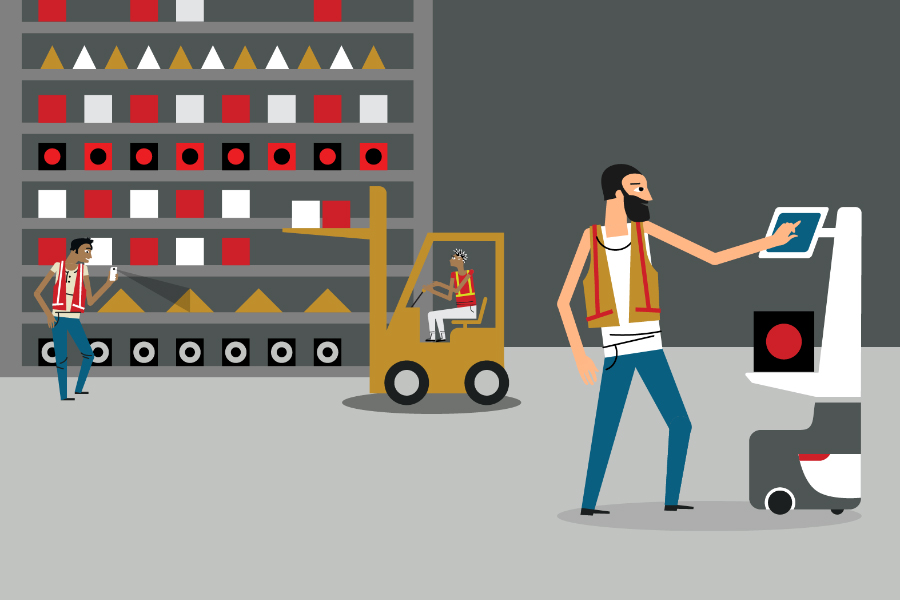The order fulfillment process is a massive understanding for brands large and small. Ensuring that e-commerce orders are processed, packed, and shipped quickly and correctly is complex enough - without factoring in the unique preferences of specific consumers.
So, why is so important for brands to understand what Gen Z consumers want from e-commerce fulfillment?
Generation Z, which refers to people born between 1997 and the early 2010s, is fast becoming a highly influential consumer segment with significant spending power. With just over 50% of the U.S. population now made up of Millennials and Gen Z, brands cannot afford to ignore younger consumers if they wish to maintain growth. As greater numbers of Gen Z enter adulthood and the workforce, catering to their preferences is crucial for brands to capture this lucrative market.
The end-to-end order fulfillment process is full of crucial touchpoints that can be leveraged to enhance the customer experience and boost brand loyalty. Everything from the shipping methods you offer, to the return process, to the packaging you use has an impact on customer satisfaction. By understanding what appeals most to Gen Z consumers, you can design a fulfillment strategy that caters to this audience.
Ryder’s latest e-commerce consumer study Adapting to Inflation: Consumer Outlook on E-Commerce dives into the shopping behaviors, preferences, and expectations of 1,077 U.S. online shoppers. In this blog, we're going to explore what the study reveals about Gen Z’s expectations from the fulfillment process - and how brands can deliver.
What Gen Z wants during e-commerce fulfillment
Shipping & delivery
Having grown up with online shopping and 24/7 internet access, Generation Z is often characterized as having extremely high expectations for rapid shipping. In fact, younger shoppers are the most willing of any generation to wait for online orders.
According to our 2023 consumer study, just 14% of 18-29-year-olds expect orders to arrive within 1-2 days, compared with 35% of consumers aged 45-60.
But as a group with less reliable spending power, Gen Z is sensitive to extra fees and is willing to sacrifice speed in exchange for a lower cost.
For example, 26% of Gen Z won't pay for shipping if the order is going to take more than 2 days to arrive, instead preferring a slower free shipping option. A rising proportion is also showing an interest in white glove delivery options, with 5% saying they like the idea of being able to choose a specific delivery date for their order.
In sum, most Gen Z consumers are happy to prioritize cost over convenience when it comes to shipping and delivery. But when they are paying out of pocket for a shipping service, they have incredibly high expectations for speed and customization.
BOPIS
Buy Online, Pickup In-Store (BOPIS) and curbside pickup saw a surge in popularity during the COVID-19 pandemic, and it's showing no signs of slowing down. With many customers feeling the pinch due to inflation, store-based pickup options offer a way for shoppers to get their orders fast while saving still money.
Not surprisingly, Gen Z's preference for in-store pickup services stems from their drive to save valuable shipping dollars on their purchase. 61% said they use store-based pickup specifically to avoid paying for shipping. Moreover, the desire for instant gratification is driving many to skip home delivery in favor of getting items more quickly. The younger the shopper is, the more likely it is they choose to shop in-store specifically to avoid waiting for packages to arrive.
Gen Z is more interested in BOPIS than other click and collect options, with 44% of Gen Z respondents saying they used BOPIS more than either curbside or remote pickup. This presents some great upselling opportunities to brands, as some 45% of online shoppers often make additional purchases in-store.
Returns
The return experience in e-commerce is critical to customer satisfaction, especially as this often marks the first personal interaction that a customer has with your brand. As savvy online shoppers, it's easy to assume that Gen Z prefers a tech-focused return experience that minimizes personal interaction. However, younger consumers are showing a marked preference for more traditional return experiences.
Ryder found that almost half (45%) of shoppers aged 18-29 say they prefer in-store returns over mail returns, especially as storefronts have re-opened after the COVID-19 pandemic. According to Happy Returns by PayPal, 79% of shoppers under 30 find mail returns either somewhat or very annoying, since it requires them to have access to resources such as packaging and printers to generate return labels.
This preference for in-store returns offers some very lucrative sales opportunities to retailers. Shoppers who are visiting stores to return merchandise are much more open to getting recommendations for alternative products, or even hearing about new product arrivals. Good customer support is crucial to steer these customers toward positive shopping behaviors can boost revenue and foster ongoing customer loyalty.
However, Gen Z return behaviors also present some serious challenges to return processing capacity. 'Bracketing' is the practice of buying multiple versions of an item with the intent of returning some of them. This can distort inventory levels and inflate return volumes, causing brands to miss out on crucial resale opportunities.
It turns out that Gen Z consumers are some of the biggest bracketers, with 60% of shoppers admitting to having bracketed a purchase in the past year. The reasons for bracketing in e-commerce are mostly about efficiency; consumers don't want to make a mistake with their purchase and then have to wait several days for a fresh order to arrive. Tools such as Try Now, Buy Later enable brands to make bracketing a legitimate offering with more safeguards, giving operational visibility into the process.
Packaging
Packaging plays several roles within the order fulfillment process. In addition to protecting orders in transit and reducing DIM weight with the right design, your choice of packaging has a huge impact on customer satisfaction and whether customers will return to your brand.
Gen Zers have proven themselves to pay close attention to the customer experience, with just a 50% satisfaction rate compared to 71-72% for previous generations. But because they value the personal touch, there's a range of initiatives that brands can invest in to impress young shoppers.
Ryder's study found that Gen Z is the generation most attracted to premium packaging designs, with 37% saying that it “makes me want to purchase from the brand again” and 67% saying “I’m more excited about opening the package." Likewise, Gen Zers were more engaged than older generations by value-added offerings such as free samples (29%) swag (9%), and personal notes (8%).
These kinds of custom fulfillment services play an increasingly important role in attracting and retaining Gen Z shoppers, especially in highly competitive verticals like beauty and apparel. Packaging represents a very tangible reflection of company values. It communicates clearly to customers whether the moment delivery is seen as a valuable touchpoint within the customer journey - or just an afterthought. By investing in memorable unboxing experiences, brands are more likely to be perceived as high-value.
Sustainability
As consumers at large become more aware of sustainability and its role in their purchasing decisions, Gen Z has proven themselves to be the leaders of the pack. As well as being the most vocal about climate change, Gen Z is also taking a strong stance on the impact of the online shopping journey - but in a different way from other generations.
Eco-friendly packaging has been a key sustainability initiative in e-commerce to help brands to lower their carbon footprint. Yet just 39% of young consumers exhibit an interest in sustainable packaging, compared to 56% of older consumers.
In recent years, sustainable packaging has played a big role in corporate greenwashing practices, with many companies focusing on surface-level re-branding initiatives rather than transforming their supply chains. Moreover, eco-friendly materials can be challenging for consumers to dispose of correctly. So, it's not surprising that Gen Zers are exhibiting some skepticism towards sustainable packaging in favor of more targeted sustainability initiatives.
For example, 54% of Gen Z are interested in learning more about product origin and company history, compared to just 30% of consumers aged 60+. Carbon offsetting for shipping and delivery is also growing in popularity, with three-in-five (57%) Gen Zers believing that carbon offsetting strategies have an important role to play in addressing environmental impact.
Another important aspect of Gen Z's sustainability habits is the growing role of circular retail. 64% of those surveyed stated that they participated in the circular economy, including resale, upcycling.




